For the last six years, the Trust has provided funding for Hanging On: Saving Shenandoah’s Hemlock and Ash Trees, making it possible for the Park to protect and preserve hemlock and ash trees from the serious threat of invasive hemlock woolly adelgids (HWA) and emerald ash borers (EAB).
In the past 25 years, HWA has killed 95% of Shenandoah’s hemlock trees, and, without treatment, the EAB is likely to kill over a million ash trees in the park in the next 7-10 years.
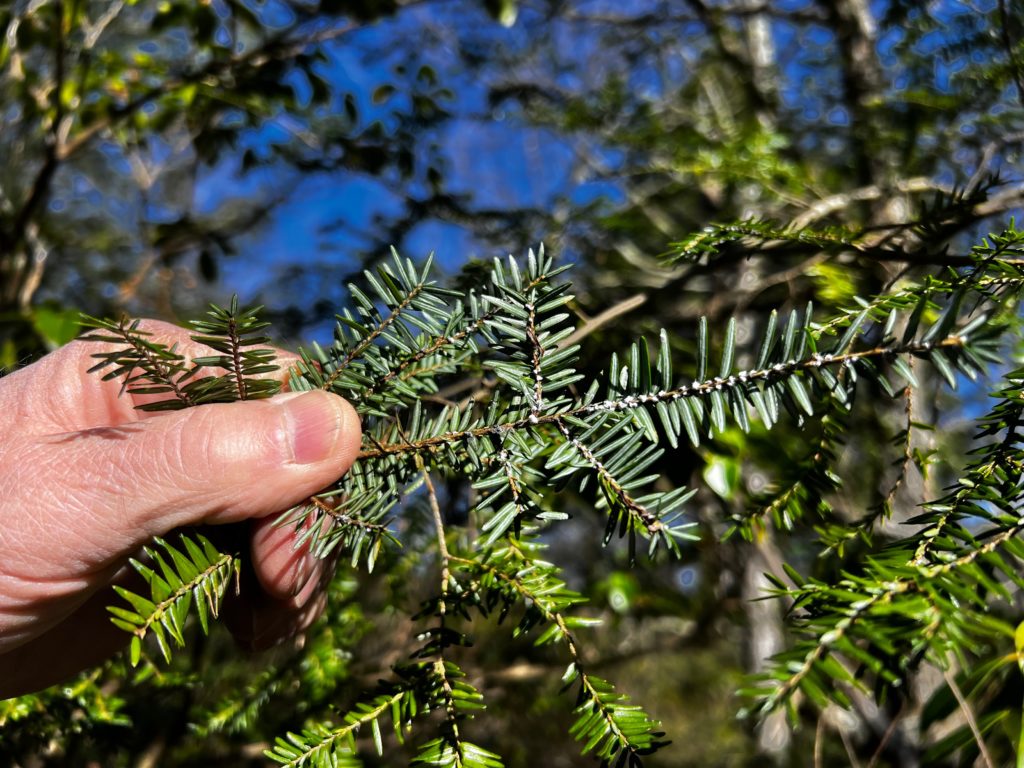
Infested hemlock branch, white and “woolly” with HWA.
BACKGROUND
The Park began pesticidal soil treatments for both tree species in early 2017, but it was immediately obvious that these root injections would not be enough, especially for trees near waterways, where soil treatment isn’t an option.
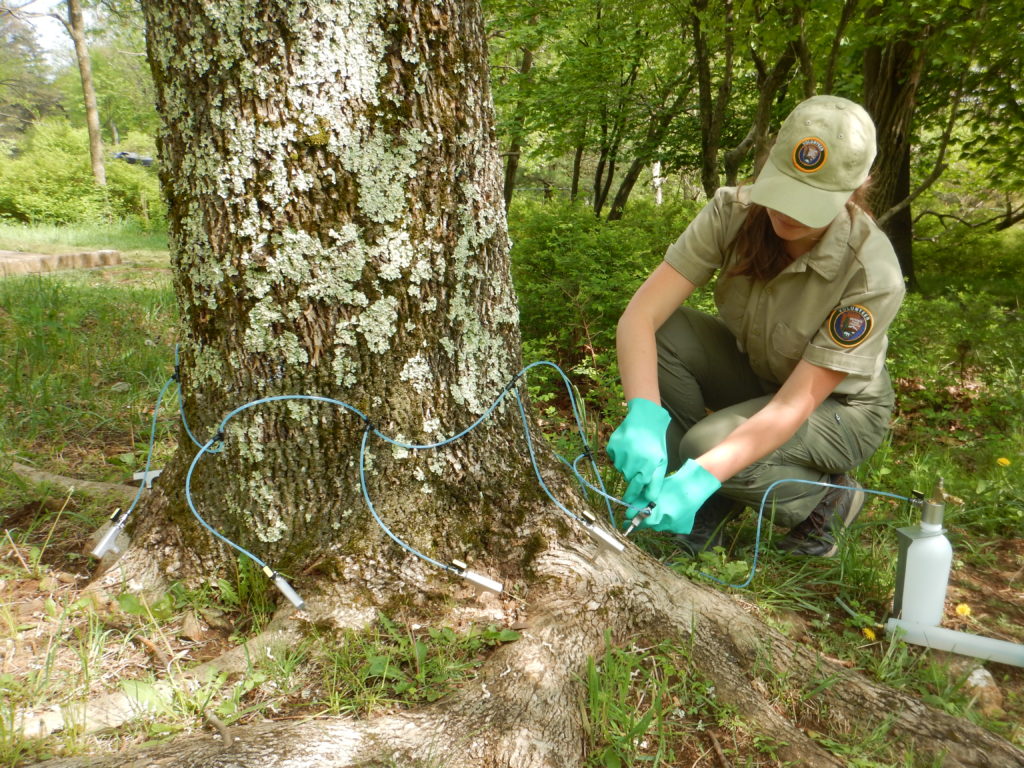
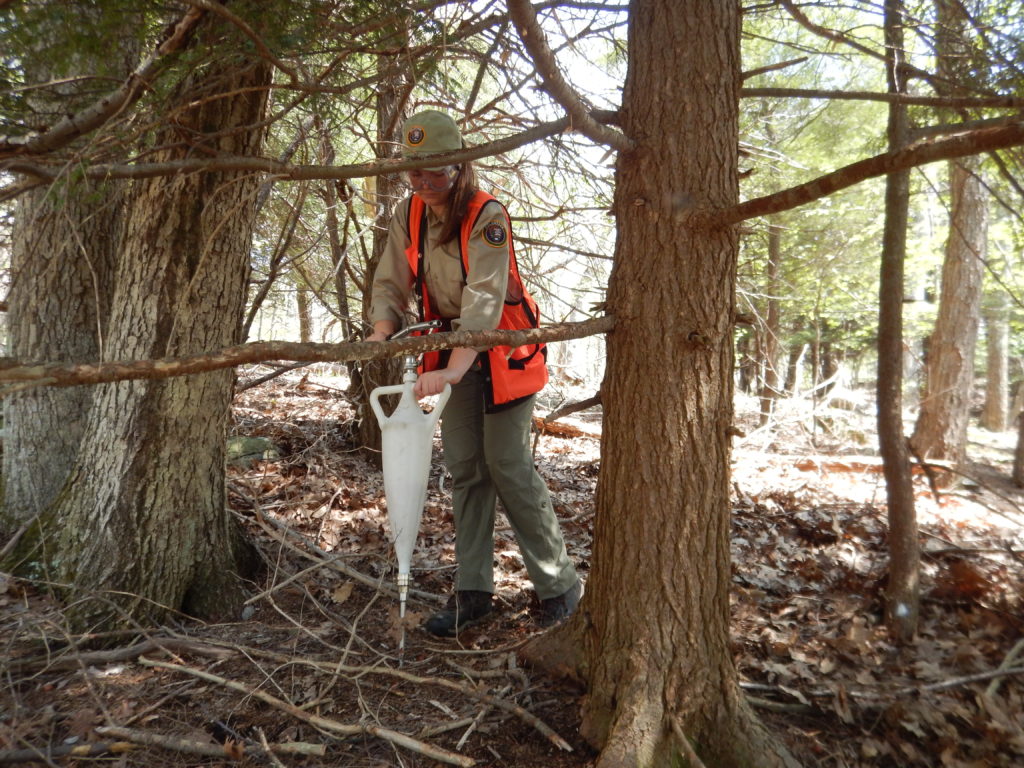
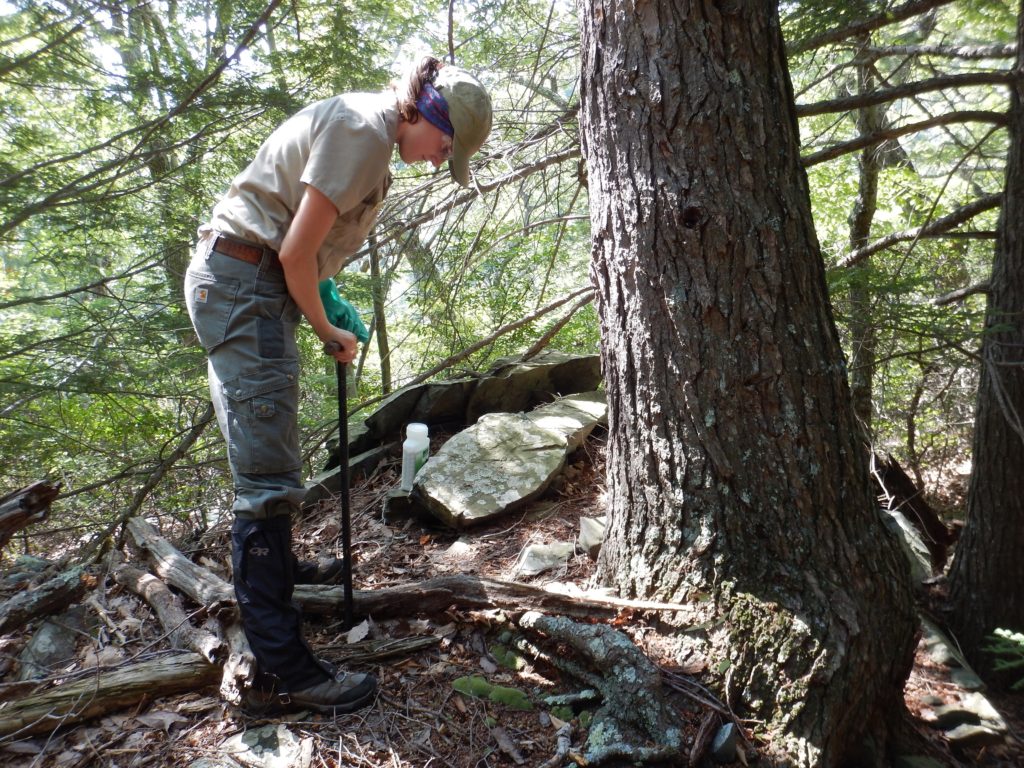
Trained volunteers treat threatened trees with soil injections.
In 2018, after a decade of waiting and watching studies conducted by the U.S. Department of Agriculture: Animal and Plant Health Inspection Service (APHIS) and other national parks, Shenandoah decided to introduce predatory laricobius osakensis beetles to HWA populations on threatened hemlocks.
Laricobius beetles are very host-specific, only preying on the invasive adelgid.
Through a partnership with Virginia Tech, the Trust purchased 500 beetles, and Park staff released them along the South Fork of the Mormons River and along the boundary near the Charlottesville Reservoir.
Since that first release, Shenandoah staff continued to release 500 laricobius beetles every year at new sites. In 2022, they were able to release more than 1,000 beetles in threatened areas across the Park.
“This year, we’ve released beetles four times in four different places!” said Dale Meyerhoeffer, a Forest Health Biological Science Technician for Shenandoah. “We couldn’t have done any of that without the Trust. We are definitely, beyond measure, grateful. I don’t know how to say it strongly enough. We’re thankful for the Trust and for the donations and for what we’re able to do because of what the Trust does.”
Our staff and Board of Trustees were invited to volunteer on the last beetle release in November.
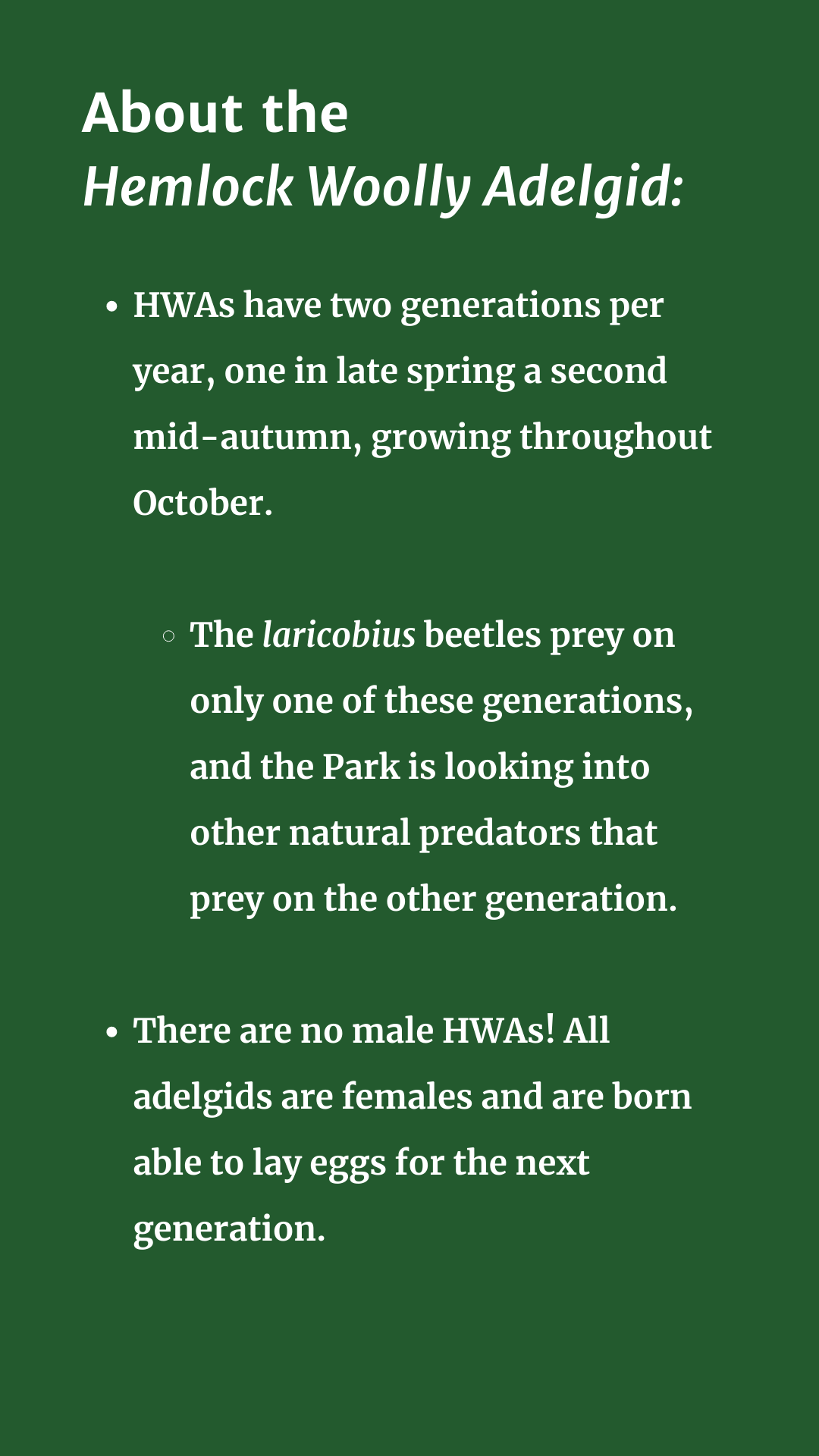
THE NOVEMBER RELEASE EXPERIENCE
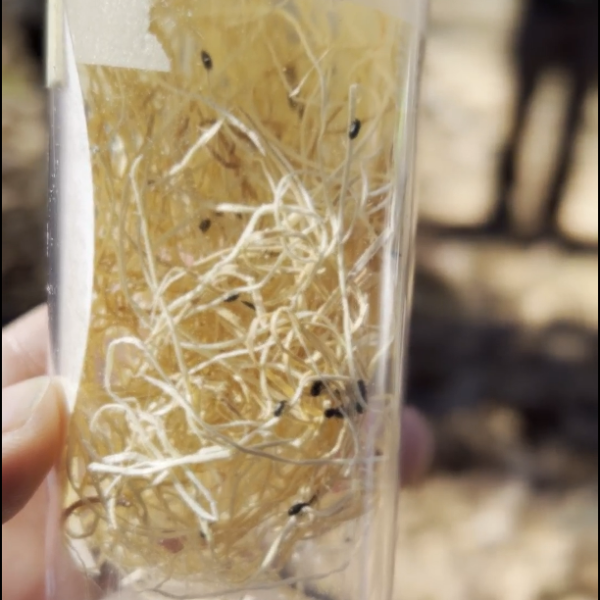
Laricobius beetles in cases ready for release.
Dale led the volunteer crew, which consisted of the Secretary of our Board of Trustees, Walter Heeb, and his wife and father-in-law; SNPT staff Ethan Serr and Ember Heishman; two Park volunteers; four Park staff from various departments; and Dale’s young grandson, TJ.
The group gathered at the Limberlost Trailhead and carpooled down the Old Rag Fire Road to the selected release site, where five hemlocks showed significant populations of HWA invasion. We got our first glimpse of the laricobius beetles as Dale prepped us for the release process.
The beetles, kept in groups of 100 in small plastic cylinders, were incredibly small – just black specks amidst the tangle of dry grass. Dale and Joan, a long-time volunteer for the program, demonstrated how to properly release the beetles.
First, Dale created a small nest of leaves in the fork of a branch with notable HWA. Joan then opened the first cylinder and used a pair of long tweezers to extract the beetles and grass, gently sliding them onto the nest of leaves. She then used a small paintbrush to carefully move any beetles – which were surprisingly cooperative with the whole process – remaining in the plastic onto the nest.
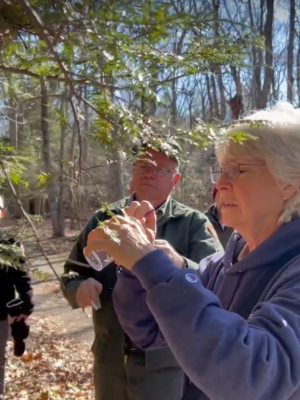
Joan and Dale demonstrate how to properly release the beetles.
Slow, gradual movements were key to keeping the beetles on the hemlocks. “When they get excited, they’ll just drop to the ground,” Dale explained. “So we have to be careful not to walk beneath where they’re released. They can fly just fine, but when they’re disturbed, they drop.”
Lincoln, another long-time volunteer in the Park, joked, “We can’t waste any!” After a quick laugh, Dale got serious and informed us of the cost of this treatment: each tiny beetle costs $5, making these releases extremely valuable affairs!
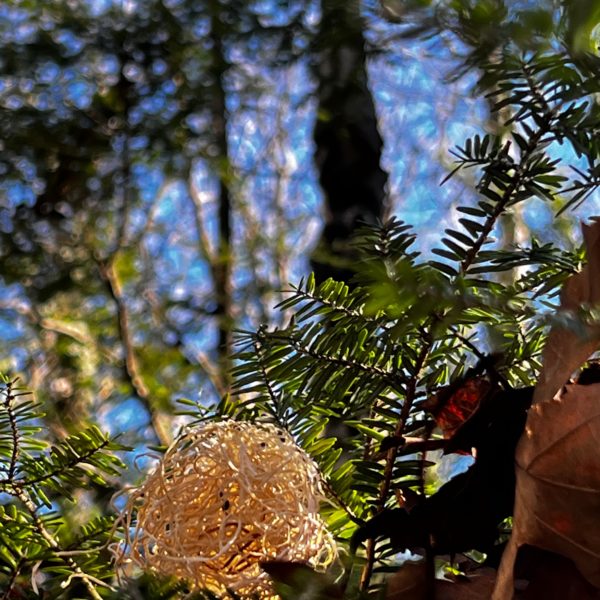
Laricobius beetles released on HWA-affected branch.
Ethan, Ember, and Walter were all able to get hands-on experience, as Dale and TJ led them through releasing the last three cylinders.
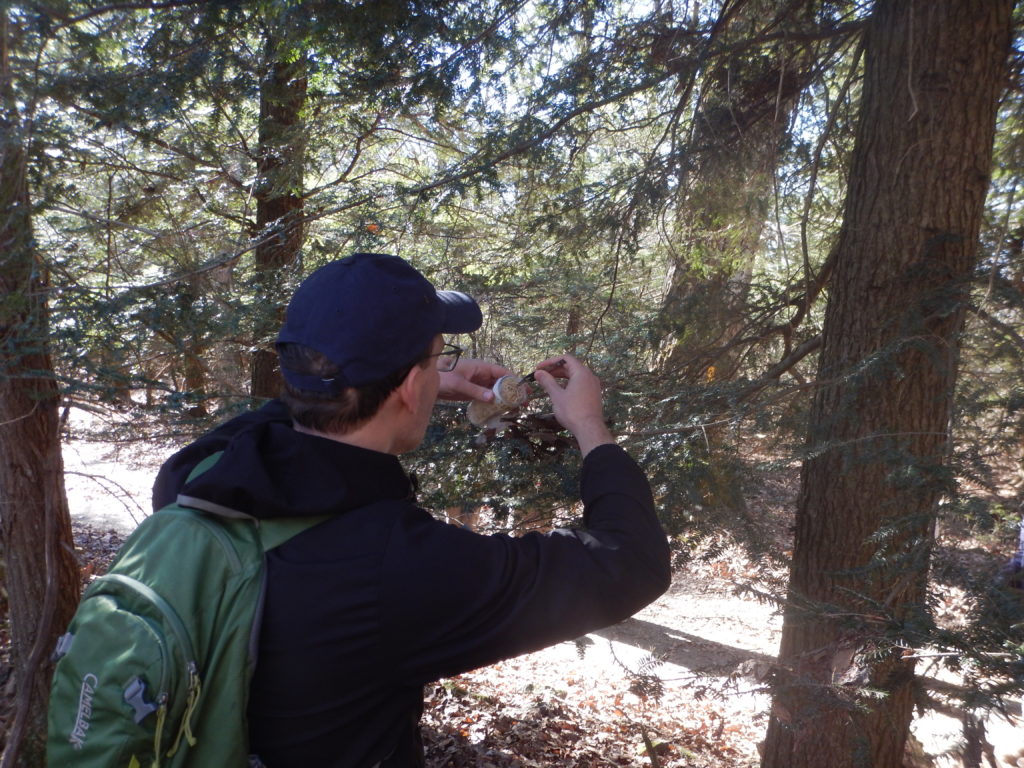
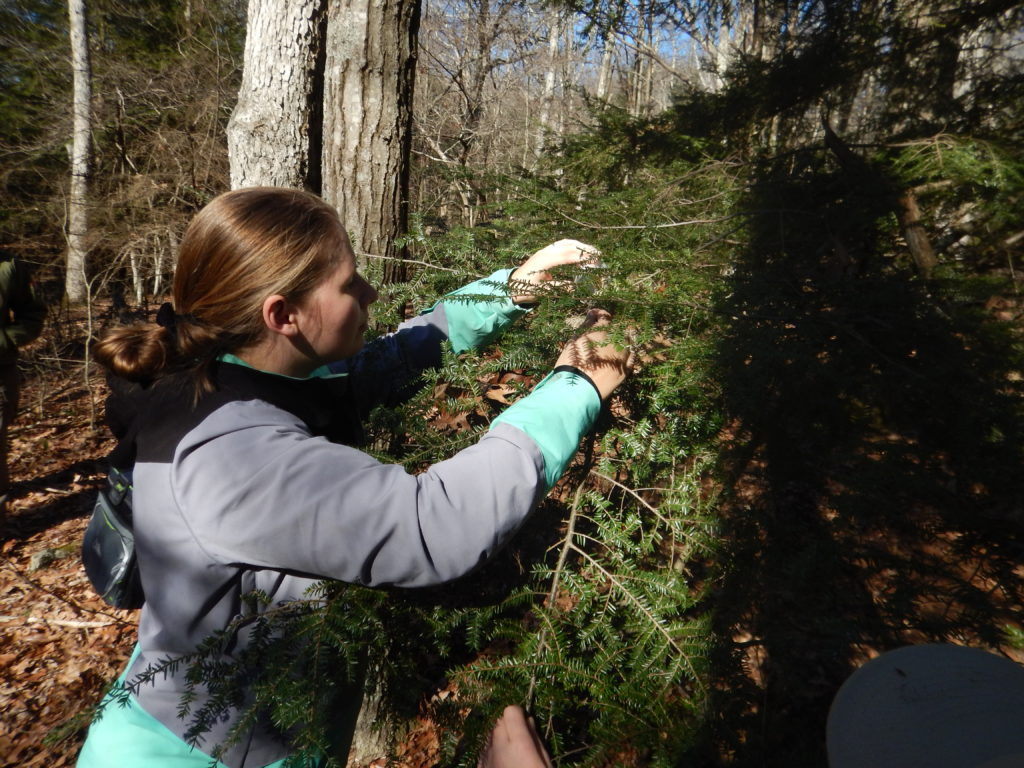
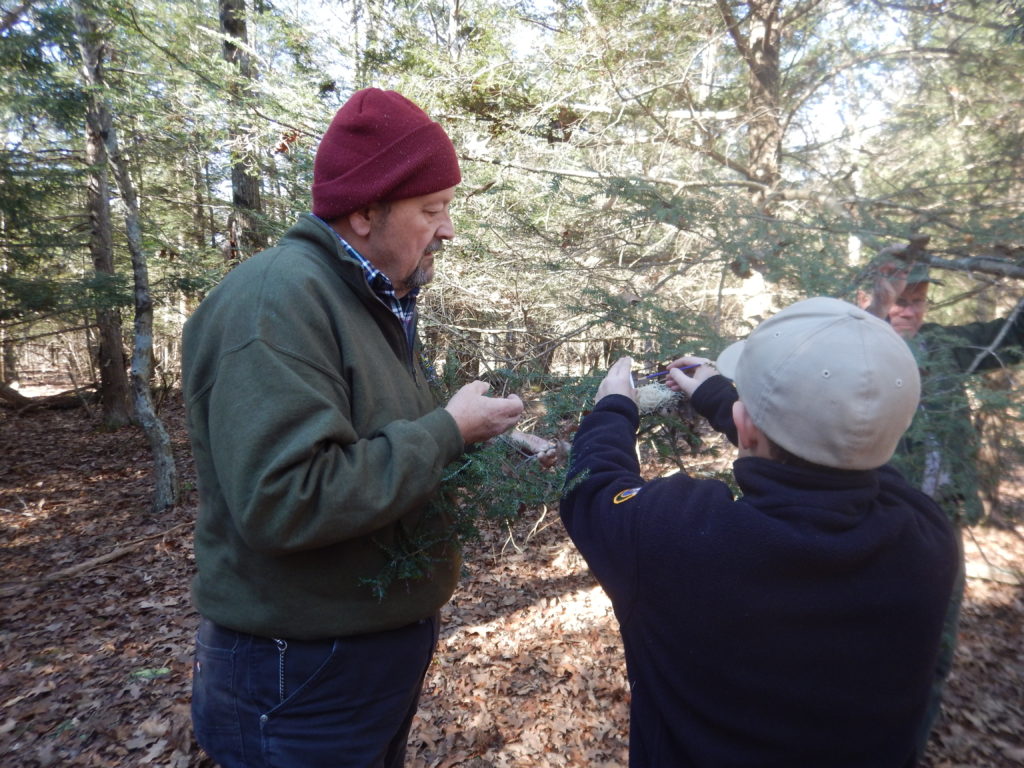
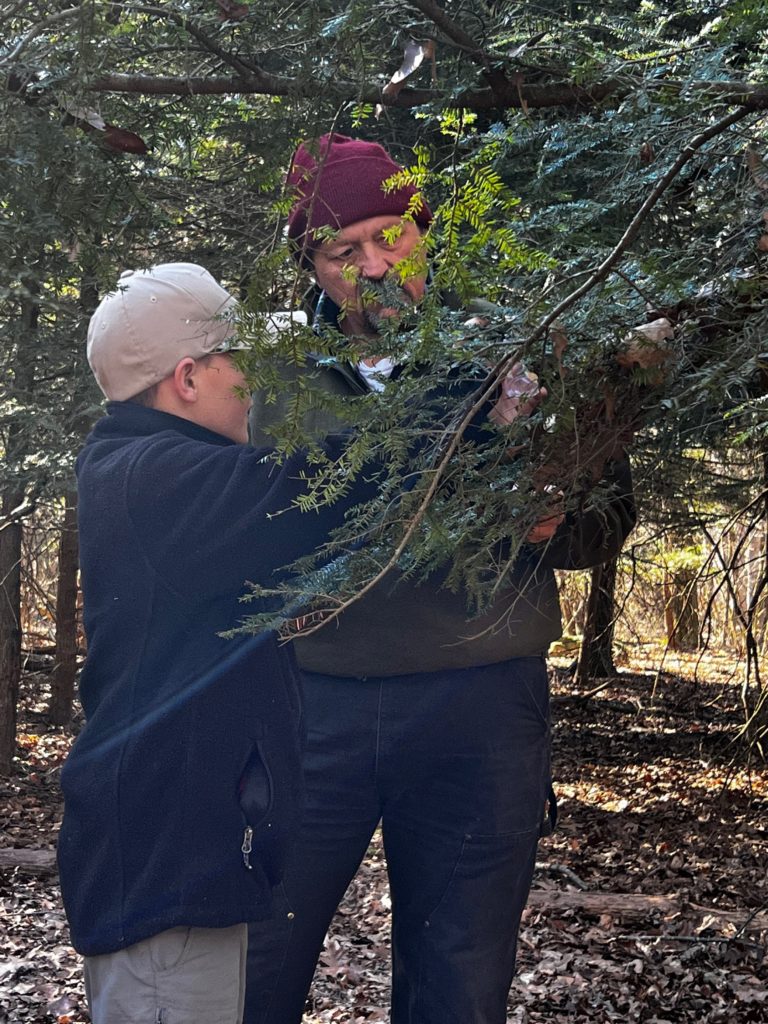
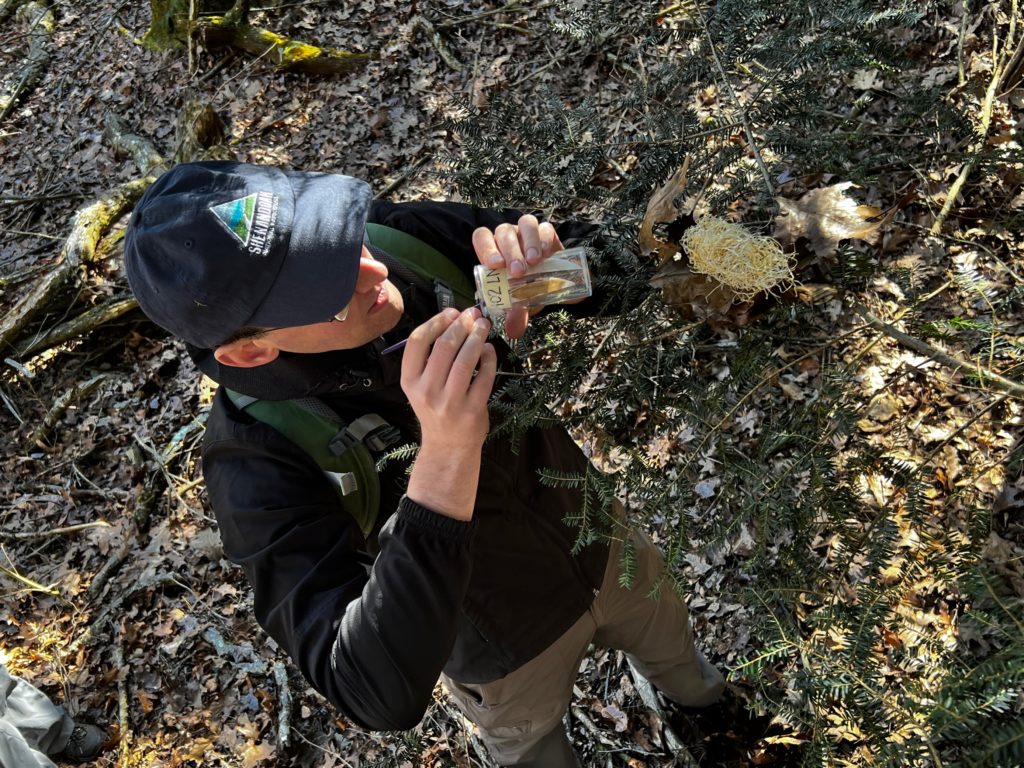

“The beetles are getting established, and they are spreading,” Dale told the group. “We are finding beetles where we’d released in prior years, and we’re finding them at some distance away.” Studies show that the laricobius beetles are causing significant reductions in one generation of HWAs, and the Park plans to continue protecting hemlocks through this program.
“The laricobius beetles are one of the tools we’ll use to get the balance of nature so we don’t have to keep applying pesticides,” Dale concluded. “We believe eventually, the predator beetles can take our place and do even more than we can. We can’t treat trees around the water with chemicals, but the beetles can hit those trees – they can do what we can’t do.”
This project is made possible through the generous support of the Leggett Foundation, and the DN Batten Foundation, and other generous donors.


Want to hear more about this project? Check out this video about former Artist-in-Residence Jillian Sico, a papermaker who was inspired by the effects of the adelgid on hemlock populations in the Park.

